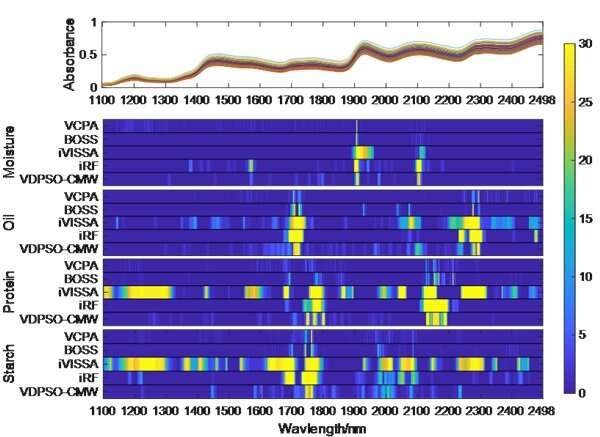Recently, researchers from the Institute of Intelligent Machines developed a new wavelength selection algorithm based on combined moving window (CMW) and variable dimension particle swarm optimization (VDPSO) algorithm.
CMW retained the advantages of the moving window algorithm, and different windows could overlap each other to realize automatic optimization of spectral interval width and number. VDPSO algorithms improved the traditional particle swarm optimization (PSO) algorithm.
This new algorithm, which is called VDPSO-CMW, could search the data space in different dimensions, and reduce the risk of limited local extrema and over fitting.
Combined with the moving window strategy, the spectral data variables could be quickly selected.
Comparing with four high-performance variable selection algorithms such as BOSS, VCPA, iVISSA and IRF, the results showed that the algorithm could select the more important spectral information and improve the predictive ability of the model.
The algorithm was expected to be further applied to data analysis in the fields of genomics, proteomics, metabolomics and quantitative structure-activity relationship.
Scientists use reinforcement learning to train quantum algorithm
More information:
Pengfei Zhang et al. A novel variable selection method based on combined moving window and intelligent optimization algorithm for variable selection in chemical modeling, Spectrochimica Acta Part A: Molecular and Biomolecular Spectroscopy (2020). DOI: 10.1016/j.saa.2020.118986
Provided by
Chinese Academy of Sciences
Citation:
Researchers develop new algorithm with better performance for spectral technology (2020, October 14)
retrieved 17 October 2020
from https://techxplore.com/news/2020-10-algorithm-spectral-technology.html
This document is subject to copyright. Apart from any fair dealing for the purpose of private study or research, no
part may be reproduced without the written permission. The content is provided for information purposes only.
